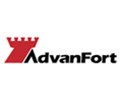Many individual still confuses ship registration with ship classification. It becomes even confusing where some international ship registers offer the services of classification as well as ship registration. Below write up will help clearly understand classification societies together with their role in shipping:
SHIP CLASSIFICATION /
CLASSIFICATION SOCIETIES
A classification
society is a Non-governmental organization that establishes and
maintains technical standards for the construction and operation of Ships and offshore
structures.
The society is also responsible for certification and validating
that construction is according to set standards and carries out regular surveys
to ensure compliance with the standards.
Classification surveyors inspect ships to make sure that
the ship, its components and machinery are built and maintained according to
the standards required for their particular class
The best know class of ship to this day is class 100A1
Today a ship either meets the relevant class society’s
rules or it does not.
To avoid liability, classification societies explicitly
take no responsibility for the safety, fitness for purpose, or seaworthiness of
the ship. In other words, classification societies do not issue statements or
certifications that a vessel is 'fit to sail' or 'unfit to sail', but qualify
that the vessel is in compliance with the required codes. This is in part
related to legal liability of the classification society.
ROLES OF CLASSIFICATION
SOCIETIES:
·
Classification societies
set technical rules for vessel construction
·
Confirm that designs and
calculations meet these rules,
·
Survey ships and
structures during the process of construction and commissioning, and
·
Periodically survey vessels
to ensure that they continue to meet the rules.
·
They are responsible for
classing oil platforms, other offshore structures, and submarines. This survey
process covers diesel engines, important shipboard pumps and other vital
machinery.
·
They employ ship
surveyors, material engineers, piping engineers, mechanical engineers, chemical
engineers and electrical engineers, often located at ports and office buildings
around the world.
·
The larger societies
also conduct research at their own research facilities in order to improve the
effectiveness of their rules and to investigate the safety of new innovations
in shipbuilding.
INTERNATIONAL ASSOCIATION OF CLASSIFICATION SOCIETY
The advent of open registers, or flags of convenience who
also had interest in ship classification, led to competition between
classification societies and to a relaxation of their standards.
They have lower standards for vessel, equipment, and crew
than traditional maritime countries and often have classification societies
certify and inspect the vessels in their registry, instead of by their own
shipping authority.
This made it attractive for ship owners to change flag,
whereby the ship lost the economic link and the country of registry. This made
it easier to change class and introduced a new phenomenon; class hopping.
A ship owner that is dissatisfied with class can change
to a different class relatively easily. This has led to more competition
between classes and a relaxation of the standards.
This has led to the shipping industry losing confidence
in the classification societies
The major classification Societies quickly came together
and formed the international association of classification society. This
association came up with guidelines, procedures, rules and policies to govern
the classification of ships. This included establishment of TOCA (Transfer of
Class Agreement). This provided guidelines that were to be adhered to for
change of class.
MAJOR CLASSIFICATION
SOCIETIES
Today there are more than 50 classification societies,
the most known of which are:
1.
Det Norske Veritas (DNV)
2.
Lloyd's Register (LR)
3.
Bureau Veritas (BV)
4.
Nippon Kaiji Kyokai (NKK)
5.
American Bureau of
Shipping (AB)
6.
Registro
Italiano Navale (RINA)
7. Germanischer Lloyd (GL)
8.
China
Classification Society (CSS)
9.
Russian
Maritime Register of Shipping (RMRS)
10.
Korean
Register of Shipping (KRS)


